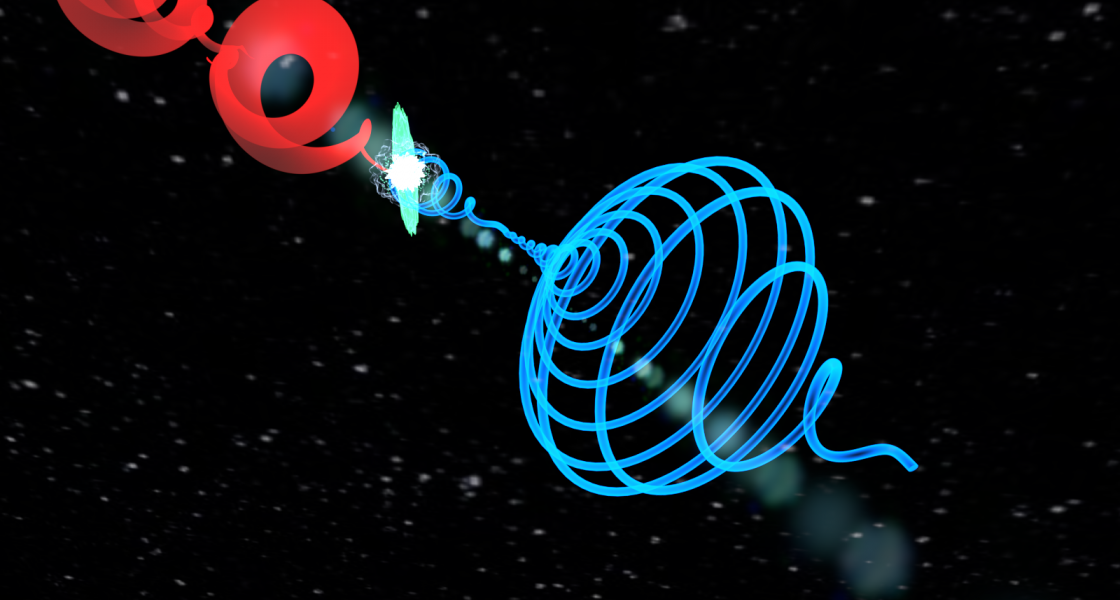From Optical Donuts to Optical Croissants: The Unique Physics of Self-Torqued Light Beams
“Normally, when HHG is driven with a ‘doughnut’ laser beam, the conservation rules dictate that each harmonic has an OAM equal to the harmonic number times the OAM of the driving laser. However, if we drive the HHG process with a time-delayed pair of laser pulses possessing different OAM, then things get really interesting,” says corresponding author Kevin Dorney, a JILA postdoc who defended his Ph.D. thesis based partly on this work last month. “The time-delayed pulse pair results in the emission of EUV light with a time-varying OAM, which progresses smoothly through an octave of OAM states.”
As the OAM content dynamically varies along the EUV pulse, the light beam continues to accelerate and thus possesses a self-torque. Such a property is rarely observed, and nearly never controlled, and to date has only been observed in electrodynamics or predicted to be in certain gravitational waves.
The resulting, self-torqued EUV beams don’t look anything like a donut at all, but instead resemble a croissant. Hiding behind this optical croissant is a variety of unique physics.
As you move across the EUV croissant, the frequency varies – like different colored petals of a pinwheel spinning in the wind. This is known as an angular frequency chirp. That chirp is directly induced by the self-torque, which was key to confirming the generation of this new property of light.
“It was really quite beautiful physics to have the azimuthal [angular] frequency chirp encode the presence of a time-dependent OAM,” says JILA Fellow Margaret Murnane. “Without this connection, there would have been no way to verify the rapid, attosecond variation of the OAM, as such techniques simply do not exist.”
The research team at JILA took this idea and ran with it, and set out to measure the azimuthal frequency chirp. In order to do this, the team exploited the physics of OAM beams to precisely control the direction in which the self-torqued beams were emitted, and in doing so were able to measure the azimuthal frequency chirp simply by sending the beam into a spectrometer.
“Once we laid out the plan to make the measurement, I remember thinking it would never work. However, with a bit of perseverance and some serious engineering, we were able to pull off the entire set of measurements in less than a week!”, says Kevin Dorney. Even for a group that works continuously in the ultrafast lane, this was fast.
But the story wasn’t over yet. The research team went on to show that not only could they produce beams with a self-torque, but that the self-torque could be controlled by simply varying the relative delay between the two visible OAM pulses. The beautiful agreement with theoretical calculations from the Salamanca team verified the presence self-torque in the EUV light, confirming the generation and control of an entirely new property of light.
Looking forward, the international team of experimentalists and theorists are excited to see what opportunities might be opened up by light with a time-varying OAM. Systems with dynamically varying OAM, like binary black holes, appear in nature as well as in emergent materials systems. , The team believes that this new form of light can be used to observe and control some of the fastest nanoscale dynamics that nature has to offer, including magnetic and quantum excitations in molecules and nanostructures.
Written by Kevin Dorney and Rebecca Jacobson




